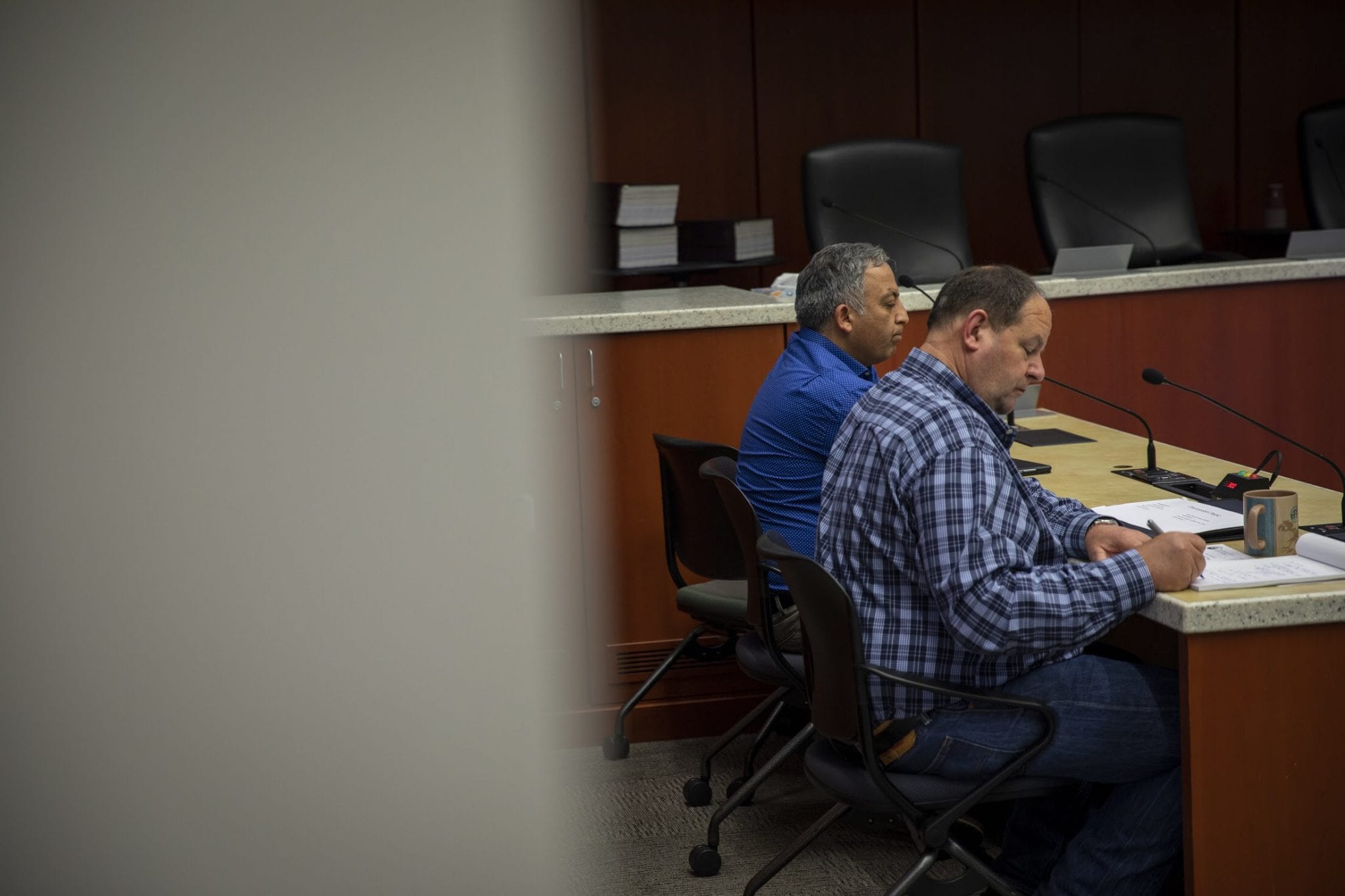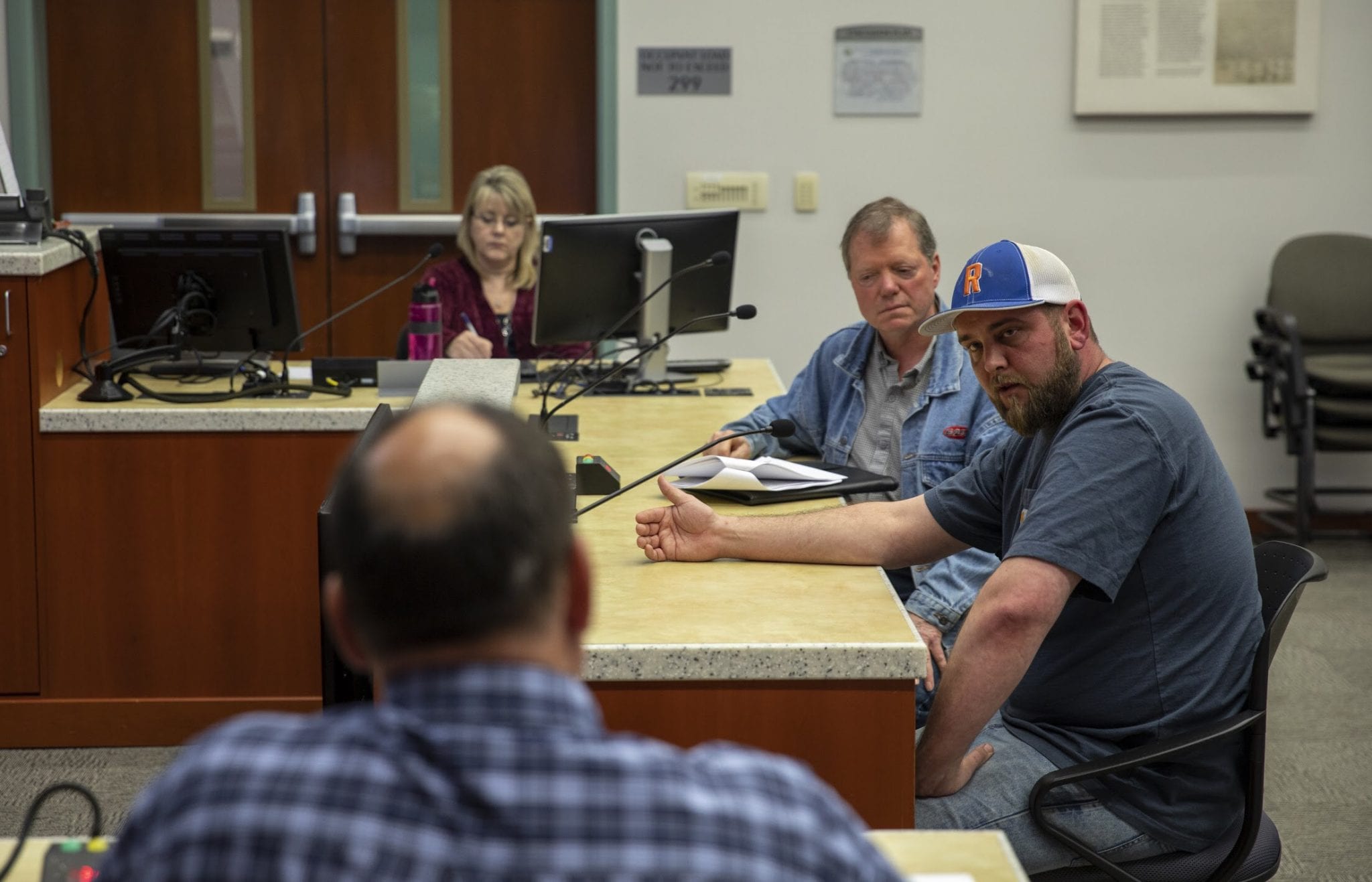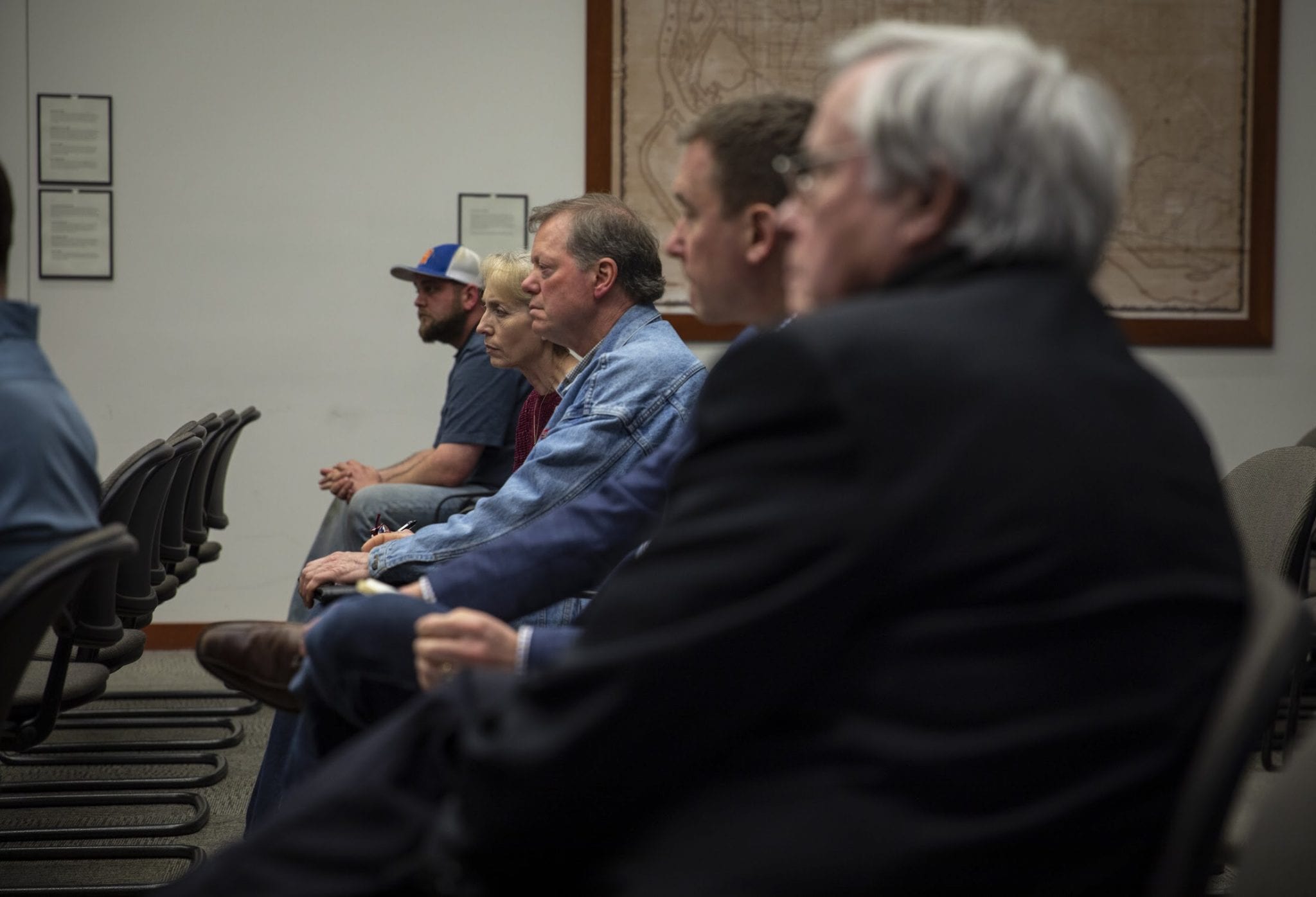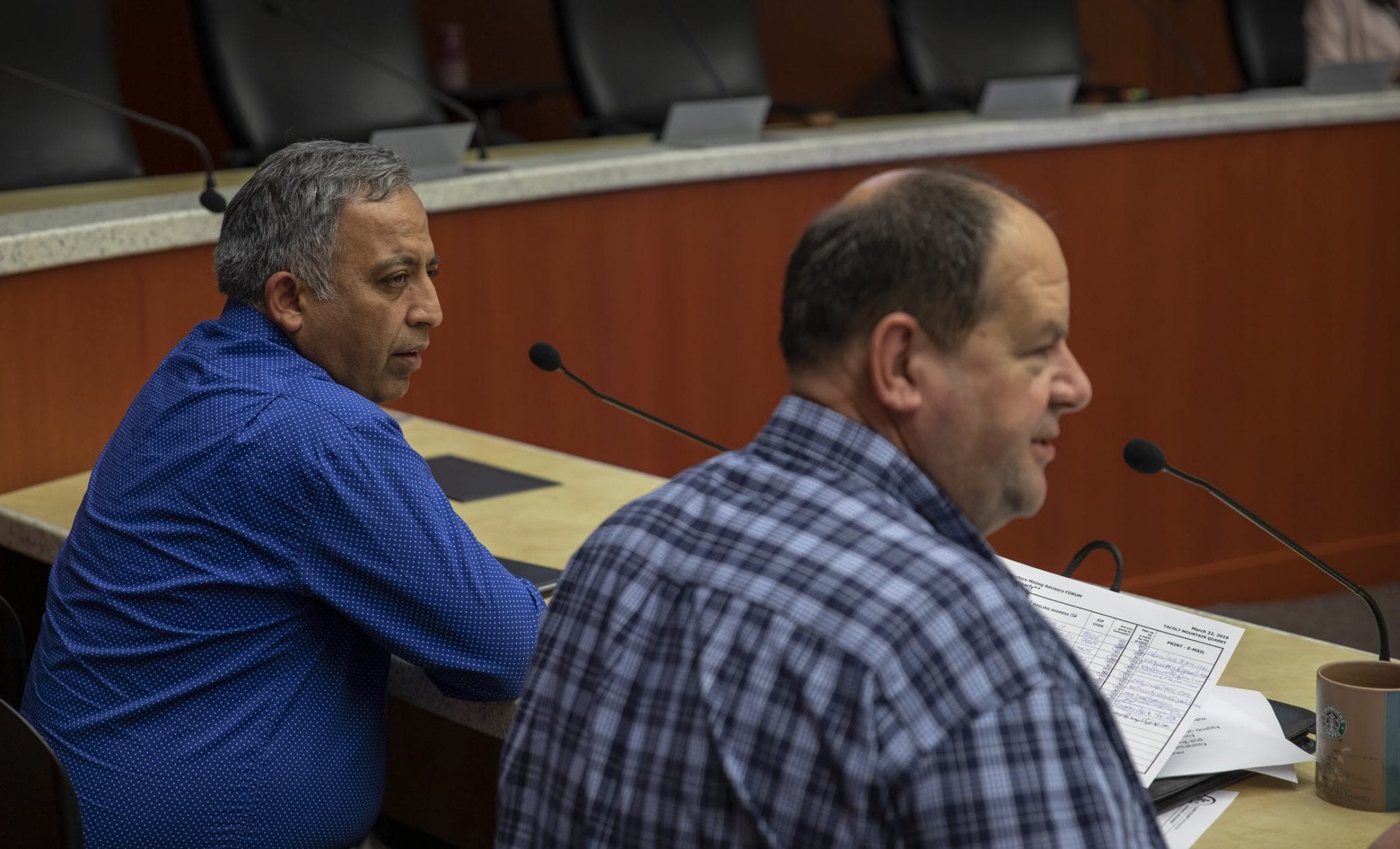First meeting focused on identifying issues and creating a dialogue
VANCOUVER — The ever-evolving controversy surrounding Yacolt Mountain Quarry has a new theater of discussion with the start of a county run forum including the mine operator and community residents.

Clark County Community Planning Director Mitch Nickolds convened the meeting in the large conference room on the sixth floor of the Public Service Center this past Friday, along with Public Works Director Ahmad Qayoumi.
With the intent to identify and ultimately solve the foremost problems, Nickolds and Qayoumi, addressed their agenda and then opened the floor for community comments.

“There will be follow-up,” said Nickolds. “A huge part of what we’re doing right now is making sure we have the resources available to ensure that we’re being as responsible as possible as permanent issuers and regulators.”
Residents living in the vicinity of the quarry have long been vocal about their experiences regarding dangerous quarry truck traffic, noise, ecological damage, and potential health hazards.
A large portion of Nickolds opening statement addressed the county’s recurring inability to respond quickly when a complaint is reported, and verified. Whether it be because of time, loss of staff members or other county resources, there is a large gap in when something occurs and our ability to bear witness to it, Nickolds said.
County Manager Shawn Henessee commented regarding staffing reductions last week; specifically with regard to code enforcement officers, who keep tabs on operations like the quarry.
“Finally starting to get that stabilized and, looking at that, I think that we certainly recognize the fact that there’s a lot of frustration on some people’s parts,” Henessee said. “I also, having been in this position quite a few times, I know that I can never keep everyone happy on both sides of the fence.”

During the forum, alternative means to enforcing the quarry’s conditional use permit were also discussed.
“One of the things we are evaluating is the possibility of placing cameras that ensured, what came out, when it came out,” Qayoumi said. “We’re evaluating that because there’s some cost involved and there’s a lot of logistics.”
Nickolds also spoke to the history of surface mining regulations in the county, and how he hopes to rectify the disparities created prior to either himself or Qayoumi.
“We have struggled through a couple of really challenging transitions here at county, including a loss of a huge number of our employees,” Nickolds said. “The things that don’t rise to the same level of urgency get pushed to the back, and that’s what happened with surface mining compliance.”
Of the over 20 people who attended the meeting, close to 10 gave a statement or made comments at the end of the proceedings. Bo Storedahl, the mine operator, was the sole representing voice of the quarry; answering questions in a very composed manner.

Of the issues put forth, recognized or disputed, here are the heavy-hitters:
- Rock truck traffic:
- At dangerous speeds
- Blocking school buses
- Causing damage to bridges and roads
- At a higher than normal volume
- Health concerns:
- Presence of mordenite (possibly harmful to respiratory system)
- Water pollution and contaminated wells
- Noise and shockwaves:
- From truck traffic
- From mine blasting, and lack of notice
- Damaging concrete foundations
- Disturbing sleep
- Ecological and geological concerns:
- Extras silt in watersheds
- Subsequent damage to fish populations
- Unstable overburden leading to landslides
“At another hearing, the mine operator said that he welcomes testing anytime, anyone wants to test the dust coming out of the quarry,” said Gary Ogier, a resident of the Yacolt Mountain area. “I suggest we figure out how to do that. Let’s at least put it to rest, clear the air, so to speak.”
The presence and toxicity of mordenite dust is contested, and there is not yet a plan to test for the substance. Marie Ogier, the wife of Gary Ogier, had private mordenite tests done in recent years, but they have not been backed up by any county or state agency.
Ogier also spoke to the noise and shockwaves created by blasting at the quarry, which he says are quite noticeable at his residence, two miles from the mining operation.
Ogier went on to express his desire for a seismograph on his land, as well as greater warning as to when blasts will take place. To this, Storedahl explained the means for complementary seismograph readings and proposed better email lists for blast notifications.
“I left my driveway to go for a run, five trucks, all in a row heading up the hill,” said Mark Rose, a resident of the Lucia Falls Road area, below Yacolt Mountain Quarry. “I think it’s important that this committee establish an acceptable level of trips, and we are updated on what the frequency is.”
Rose also said he was worried for the safety of Rock Creek Bridge 96, as it it is in the path of the trucks, which often weigh in excess of 80,000 pounds. Weight restrictions apply to emergency vehicles, but not gravel trucks.
Qayoumi, who helped write the weight regulations, explained that it has to do with the number of axles a vehicle has, and that dictates the weight distribution and subsequent stress on the bridge. Gravel trucks, now have many more axles, and thus the weight is distributed less intensely, Qayoumi said.
“I believe strongly that this mine should never have happened,” said Stan Green, another resident of the Yacolt Mountain area. “I have direct, first-hand, knowledge of this mordenite having affected me. I had to go to a specialist because I had coughing and breathing problems, and ended up having asthma for two years and being on an inhaler.”
At one point in time, Green ordered rock from the quarry to use on his property. At the time of delivery, a large quantity of dust was created and Green accidently inhaled it, he said.
Green went on to comment on the possible damage being done to county roads by the heavy rock trucks. Taxpayers are already feeling the effects; paying over $200,000 in repairs in October of last year, according to Green.
“This is a thorny issue,” he said.
At the conclusion of the meeting, Storedahl raised several questions, including the best way for him to answer community questions and dispel inaccuracies, as well as the possibility of a smaller venue with a more productive forum flow.
“There’s a lot of things that are assumed, that just simply aren’t true,” Storedahl said. “For me to come up at the end of the meeting and address everything I heard, is an assumption … It’s pretty awkward.”
He stressed his desire for a greater level of back-and-forth, as well as a more productive system, possibly with only a few representatives from both sides.
“Mining and housing has always been a contentious relationship from the beginning of time,” Storedahl said. “It’s hard to have those productive conversations without that, I guess, order. And I think that’s where the county can help out in a situation like that.”




